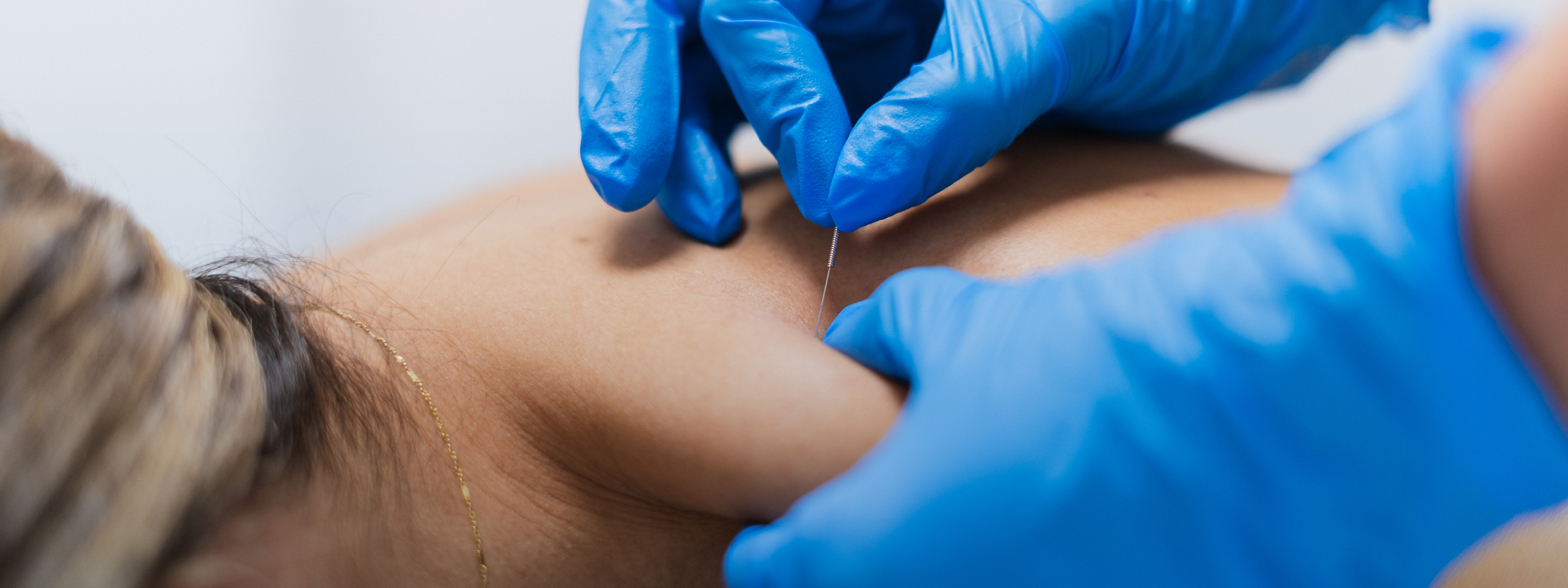 8+ years of exp
8+ years of exp
Languages
English, Urdu, Hindi and Basic ArabicClinics
HealthHub Day Surgery – Festival City
Home › Dry Needling

For those seeking effective muscle relief therapy in Dubai, dry needling offers an advanced treatment to alleviate pain and tension. This technique uses fine, sterile needles inserted into specific muscle trigger points to reduce pain, relax muscle spasms, and restore normal function.
At our clinic in Dubai, we provide dry needling as part of a comprehensive pain management and rehabilitation plan. Our licensed therapists integrate dry needling into personalized treatments, addressing conditions like neck and shoulder pain, lower back pain, sciatica, tension headaches, TMJ pain, and chronic muscle tightness. We aim to achieve lasting relief and improved mobility through this evidence-based treatment.
Dry needling involves inserting thin needles directly into tight muscle bands, known as trigger points, to stimulate and relax them. Unlike injections, these needles are “dry” – nothing is injected. This process enhances blood flow and promotes natural healing.
While dry needling uses acupuncture needles, it is different from traditional acupuncture. Focused on musculoskeletal pain and trigger-point release, it is typically performed by certified physiotherapists as part of a treatment plan.
Dry cupping involves placing special cups on the skin to create suction, boosting blood flow and drawing fresh oxygen-rich blood to the area. Rooted in traditional Chinese and Middle Eastern medicine, it is now embraced in Dubai’s physiotherapy clinics as a drug-free method to address muscle pain and stiffness.
During a dry needling session, the physiotherapist first assesses your condition to identify the specific muscles and trigger points contributing to your pain. Once a target area is pinpointed, a sterile single-use needle is gently inserted through the skin and into the sensitive trigger point within the muscle. You may feel a quick, involuntary twitch in the muscle – this reaction is normal and often a sign that the tight knot is releasing. The insertion of the needle prompts the muscle fibers to relax, reduces the taut band of tissue, and helps normalize the muscle’s function. Dry needling also stimulates increased blood circulation to the area, bringing oxygen and nutrients that aid in reducing inflammation and promoting healing.
In some cases, the needle might be slightly moved or left in place for a brief period (several seconds up to a few minutes) to maximize the therapeutic effect. The treatment is typically not painful; most patients feel only a mild pinprick or pressure, followed by relief as the muscle releases. By deactivating these trigger points, dry needling often provides an immediate reduction in pain and an improved range of motion in the affected area.
Dry needling offers several key benefits for patients with muscle pain and tightness. First and foremost, it provides targeted pain relief by addressing the source of discomfort – the trigger points within your muscles. Releasing these knots can significantly reduce muscle tension and spasm, leading to a noticeable decrease in pain levels. Patients often experience improved flexibility and range of motion in the treated area once those tight muscle bands are relaxed.
Another major benefit is the relatively quick onset of relief; many people feel better immediately after a dry needling session or within the next day. This therapy can be especially helpful for chronic pain conditions that haven’t responded to other treatments, offering a new avenue of relief. Dry needling is minimally invasive and does not involve any medication, so there are no drug-related side effects to worry about. When performed by a trained professional, it is a very safe procedure – aside from mild, temporary soreness, there are typically no significant side effects. Overall, incorporating dry needling into your physiotherapy program can accelerate your recovery, restore normal muscle function, and help you return to your daily activities with less pain.
Dry needling can effectively treat or assist in managing a variety of painful conditions and injuries. Some of the common issues we address with dry needling include:
Before starting dry needling, your physiotherapist assesses your condition and identifies muscle tightness and trigger points. The area is cleaned, and fine needles are inserted into the trigger points, which may cause a brief muscle twitch or mild cramp-like sensation.
Needles are adjusted or left in place briefly, then removed, and the area may be massaged or stretched. Post-session, muscles often feel looser and less painful, though mild soreness like after a workout may occur.
Your physiotherapist will provide aftercare advice such as staying hydrated, applying heat, or gentle movement to maintain muscle relief. These steps maximize benefits, offering significant pain relief and improved mobility.
Don’t let muscle pain hold you back – schedule your dry needling consultation in Dubai today and take the first step toward lasting relief.


While it may look similar to acupuncture, the principle is a bit different. Acupuncture is based on Traditional Chinese Medicine and aims to balance the body’s energy flow by targeting specific points along meridians. Dry needling, on the other hand, is rooted in Western medicine and focuses directly on sore or tight muscle spots identified in a physiotherapy assessment. When the needle hits a trigger point, you might feel a brief muscle twitch – that’s a good sign the knot is releasing. After needling, the muscle often relaxes, and you feel less pain and stiffness. Dry needling can be used for issues like neck/back pain, sports injuries with muscle tightness, or tension headaches (targeting tight neck muscles). In our Dubai physiotherapy practice, we use dry needling as one of many tools, often combined with exercise and stretching, to help patients get relief from stubborn muscle aches.
A: Dry needling is generally well-tolerated. You might feel a brief prick when the needle goes through the skin and a quick muscle twitch when it hits a tight spot, indicating the trigger point is releasing. Afterward, the area may feel sore like after a deep massage. Side effects include mild soreness and occasional bruising, but serious side effects are rare. Physiotherapists follow strict safety protocols to ensure your safety. Most people find the temporary discomfort worth the pain relief and muscle relaxation.
The number of sessions varies based on your condition and muscle response. Some patients feel relief after one session, especially for recent issues. Chronic conditions might need several sessions, often starting with 2-4 spaced over a few weeks. Improvements often build with each session. Your physio will monitor progress and adjust your plan, aiming for noticeable results within a reasonable timeframe.
Yes, to maximize the benefits of dry needling, stay hydrated, perform gentle stretches and movements, and apply heat to the treated area. Avoid strenuous exercise immediately post-session and be mindful of your posture and ergonomics. You should avoid very strenuous exercise or heavy lifting with that muscle group immediately after needling – give it a day of relative rest or just low-intensity activity to let it recover. Follow any specific exercises or advice from your physiotherapist to achieve lasting improvements. Dry needling can provide quick relief, but doing your “homework” in between sessions is what leads to lasting improvements
Dry needling can provide rapid relief by releasing tight muscle knots (trigger points). For some patients, this relief can be long-term, especially if the trigger point was due to a minor issue. However, if underlying causes like poor posture or lack of strength aren’t addressed, the knots can return. This is why physiotherapists often combine needling with other treatments such as stretching, strengthening, and posture correction. While dry needling offers temporary relief, addressing the root causes helps prevent recurrence, aiming for lasting results.
 8+ years of exp
8+ years of exp
HealthHub Day Surgery – Festival City